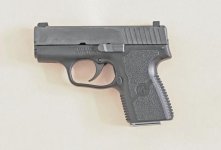LVSteve
Member
I keep seeing in articles and on gun test videos people saying "striker guns are harder to rack because you have toi cock the striker as you pull the slide back." That seems wrong to me. Surely the striker spring is tensioned when the slide goes forward and the engagement surface of the striker catches the sear.
Now, in my experience striker fired pistol often have heavier recoil springs that hammer fired guns because there is no hammer mainspring to retard the slide during recoil. Therefore, the recoil spring has to be stiffer to make up the shortfall.
This leads me to another thing. If all the recoil force on the slide is transferred via just the recoil spring, that places the force low in your hand. With a hammer fired gun, there must be some recoil force transferred through the hammer spring and/or the hammer pivot that is not straight back like the recoil spring force.
Any thoughts from the physicists on here?
Now, in my experience striker fired pistol often have heavier recoil springs that hammer fired guns because there is no hammer mainspring to retard the slide during recoil. Therefore, the recoil spring has to be stiffer to make up the shortfall.
This leads me to another thing. If all the recoil force on the slide is transferred via just the recoil spring, that places the force low in your hand. With a hammer fired gun, there must be some recoil force transferred through the hammer spring and/or the hammer pivot that is not straight back like the recoil spring force.
Any thoughts from the physicists on here?





